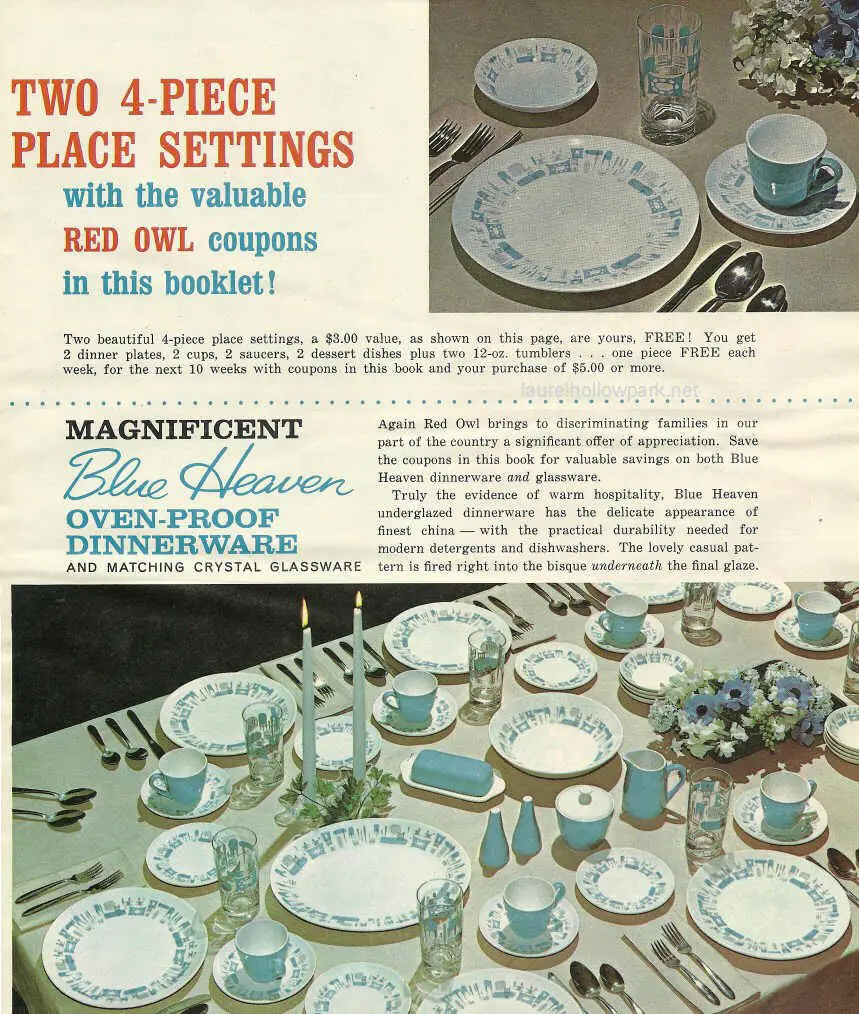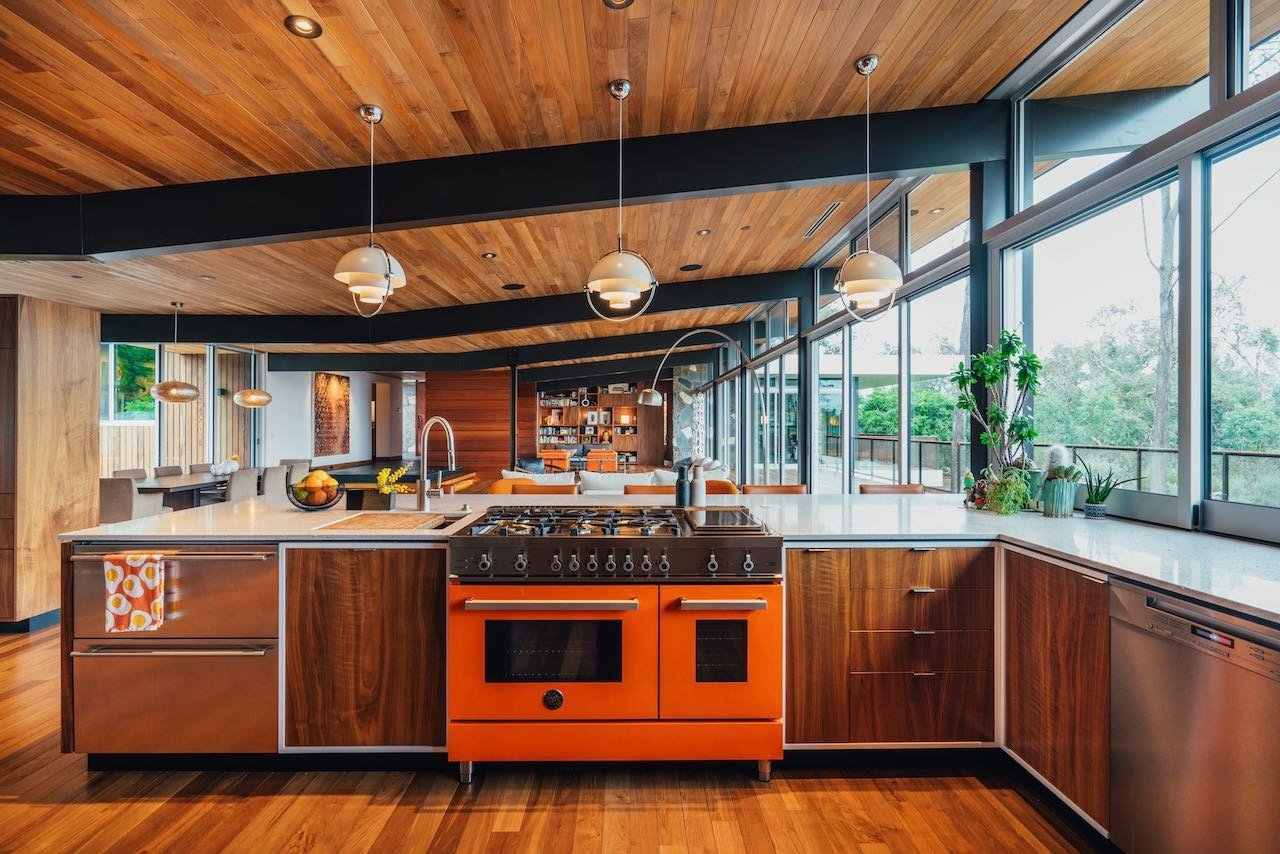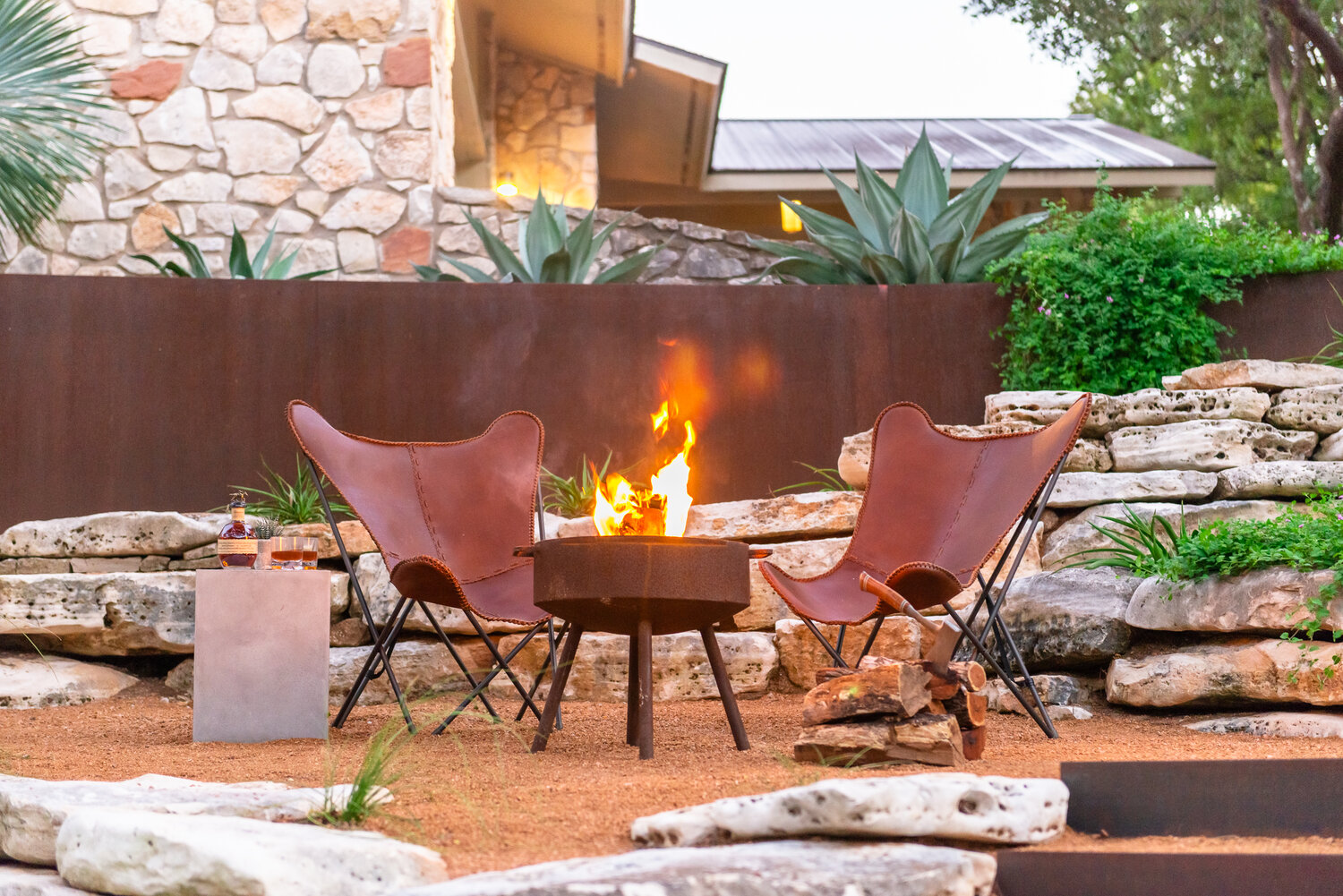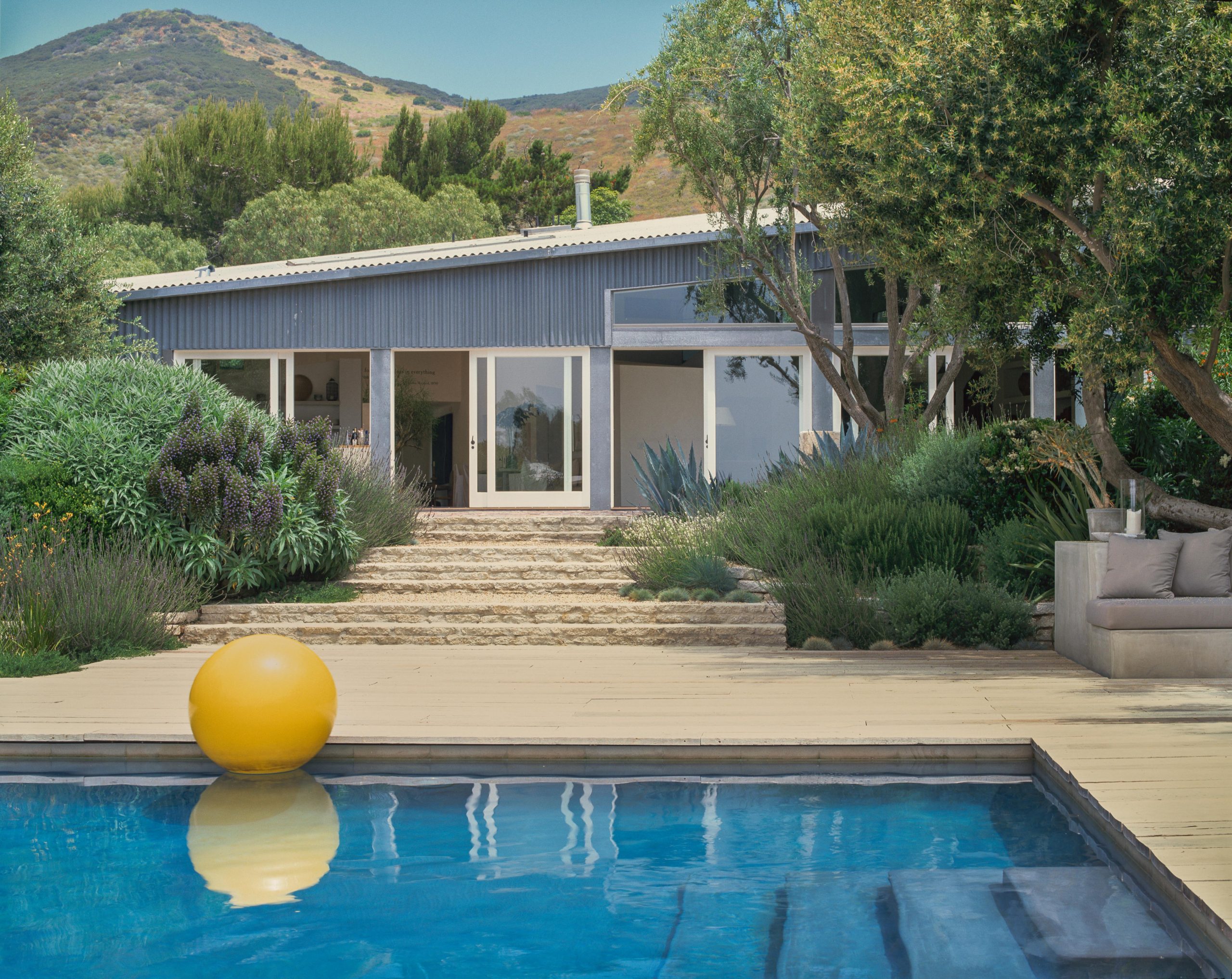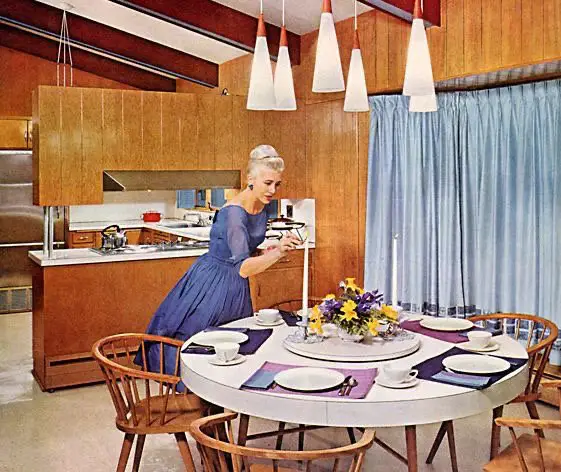
Mid-century dishware offers a snapshot into the design sensibilities and domestic life of the 1940s to 1960s. These pieces, part of the daily life, were designed with attention to form, color, and material quality that endures.
If you’re looking to add a vintage touch to your kitchen, finish off a classic dish set, or just enjoy the look and feel of mid-century dishware, it’s good to know which pieces are worth picking up, what they were made of, what to notice in their design, and how to spot the good ones today.
That’s why we’ve put together a short guide on materials, what makes a quality piece, and where to find mid-century vintage dishware.
Common Materials Used in Mid-Century Dishware
Mid-century dishware featured a variety of materials, influenced by technological advancements, affordability, and mass-production capabilities.
Ceramic (Earthenware and Stoneware): Ceramic was the predominant material. Earthenware, being less dense, was easier and cheaper to produce but more prone to chipping. Stoneware, fired at higher temperatures, was denser, heavier, and more durable.
Porcelain: Less common due to its cost, porcelain was valued for its delicate yet strong quality. It had a more formal appearance and was often reserved for “good china.” Some American companies like Lenox produced elegant lines during the mid-century period, though porcelain was more frequently found in European imports.
Melamine / Melmac: This space-age material gained popularity in the 1950s and 60s. Melamine was marketed as unbreakable and stain-resistant, making it ideal for casual dining or outdoor use. Brands like Texas Ware, Boontonware, and Branchell’s “Color-Flyte” offered dishware in vibrant colors and atomic patterns.
Glass and Heat-Proof Glass: Companies like Anchor Hocking and Fire-King produced oven-to-table glassware that also served as dishware. Pyrex was popular not just for baking but for serving as well.
Popular Brands and Patterns: Several dishware lines stood out during the mid-century era due to their bold designs, color palettes, or widespread use.
Franciscan Ware – Starburst: Produced in California, the Starburst pattern was introduced in 1954 and quickly became emblematic of atomic age design. It featured stylized starbursts in turquoise, gold, and grey on speckled earthenware.
Homer Laughlin – Fiesta: Launched in the 1930s, Fiesta experienced a resurgence in the post-war years, especially with the introduction of new colors. Its bold, solid colors and Art Deco-style concentric rings made it a kitchen staple.
Russel Wright – American Modern: Produced by Steubenville Pottery, this line was revolutionary for its soft, organic shapes and muted matte colors like seafoam, coral, and granite grey. Russel Wright became a household name in modern American living.
Sascha Brastoff Ceramics: Known for highly decorative and often whimsical pieces, Brastoff’s dinnerware sets incorporated metallic glazes, abstract forms, and hand-painted details.
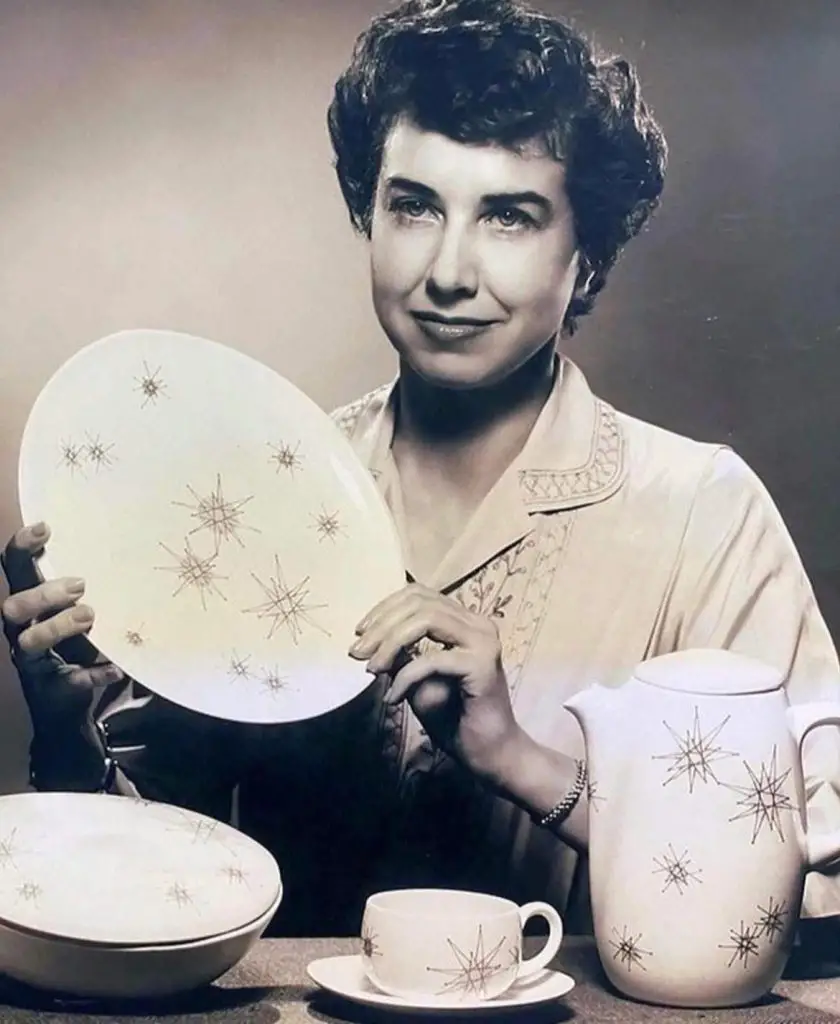
What to Look For in High-Quality Pieces
When encountering mid-century dishware at thrift stores or flea markets, certain indicators can help distinguish quality pieces.
Markings and Backstamps
Most manufacturers stamped their wares with logos, names, or country of origin. Look for markings such as “HLC” for Homer Laughlin, “Russel Wright,” “Franciscan USA,” or “Melmac.” Some stamps may have faded over time, but any legible mark is usually a positive sign.
Glaze and Color
High-quality pieces will have an even, consistent glaze. Look for depth in color, especially in lines like Fiesta and American Modern. Be mindful of chips, cracks, or “crazing” (fine spiderweb lines in the glaze), as these can indicate age and affect usability.
Weight and Thickness
Stoneware and earthenware pieces should feel substantial. Porcelain will feel lighter but strong despite its delicacy. Melamine should feel firm, not brittle. Overly lightweight ceramics might signal modern reproductions or lower-quality imports.
Design Specificity
Authentic mid-century patterns are typically hand-decorated, silk-screened, or transfer-printed. If the decoration is off-center, blurry, or appears pixelated, it may be a modern reproduction. Atomic-era design motifs include boomerangs, starbursts, amoeba shapes, mod florals, and muted or pastel colors.
Where to Find Mid-Century Dishware Today
Mid-century dishware can still be found in various places.
Estate Sales and Auctions
These often provide the best sources, especially for complete sets in good condition. Older neighborhoods where original homeowners may have lived for decades are particularly promising.
Flea Markets and Antique Malls
These venues can be unpredictable, but vendors often group dishware by era or style. It’s possible to find entire boxes tucked under tables.
Thrift Stores
Organizations like Goodwill or local church-run shops occasionally receive donations from downsizing families. Prices tend to be low, but finding quality pieces may require frequent visits.
Online
Platforms like Etsy and eBay offer extensive selections, though prices vary widely. Facebook Marketplace and Craigslist can provide local deals, though it’s advisable to request clear photos of markings, chips, and patterns before purchasing online.
Last, if you plan to use mid-century dishware regularly, keep in mind:
– Melamine should not be used in microwaves or dishwashers, as it can warp or release chemicals under high heat.
– Vintage ceramics may contain lead in the glaze; if unsure, it’s safer to use them as display pieces rather than for daily use.
